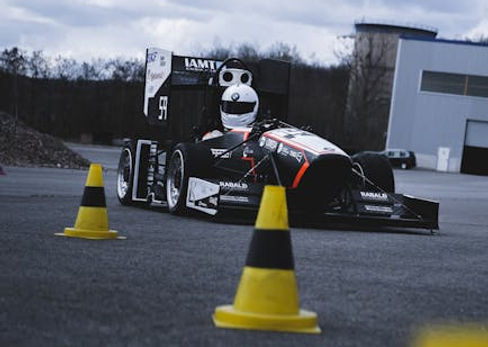Off-Road Evolution: How Ducati Plans to Expand Market Reach
- THE MAG POST

- 11 hours ago
- 5 min read

Ducati’s Dirt Bike Revolution: A 3,000-Word Deep Dive Into Strategy, Innovation, and Market Expansion
Ducati, long celebrated for its dominance in the world of superbikes, racing pedigree, and unmistakable Italian design language, is now embarking on one of the boldest expansions in its modern history. With the launch of the Desmo450 MX and Desmo250 dirt bike lines, the brand is stepping into a sector that has historically been shaped by companies like KTM, Honda, Yamaha, Husqvarna, and Kawasaki. This ambitious move is not just about releasing new models—it is about Ducati’s intention to expand market reach far beyond its traditional boundaries and transform its global presence in the motorcycle industry.
The off-road segment is fast-growing, highly competitive, and deeply rooted in performance culture. Ducati’s entrance signals confidence, strategic foresight, and a willingness to innovate in a direction that challenges its heritage. This comprehensive analysis explores Ducati’s dirt-bike debut, design DNA, technology, pricing philosophy, financial landscape, long-term strategy, market positioning, and the brand’s future trajectory—including the possibility of an IPO.
Ducati’s Dirt Bike Debut: A New Terrain
The launch of the Desmo450 MX and Desmo250 marks Ducati’s first full-scale commitment to the motocross and off-road discipline. While Ducati has produced scramblers and adventure-oriented machines, a dedicated motocross machine is unprecedented for the brand. This strategic move aims to place Ducati into a sector where rider loyalty, race wins, durability, and performance modifications matter just as much as design aesthetics.
With these models, Ducati is tapping into a vast and diverse customer base—from competitive motocross racers and trail riders to enthusiasts seeking premium performance in off-road formats. The dirt bike industry alone represents billions in annual revenue worldwide, making Ducati’s entry both timely and economically significant.
The DNA of a Ducati Dirt Bike
Ducati has long been associated with signature elements such as Desmodromic valve technology, lightweight engineering, high-revving engines, and meticulous craftsmanship. The Desmo450 and Desmo250 continue this legacy while adapting it to off-road requirements.
Key engineering principles include:
Lightweight chassis constructionoptimized for agility, airtime control, and cornering precision.
High-torque performance tuningto ensure rapid acceleration across varied terrains.
Race-developed suspension systemsdesigned to absorb impact and maintain stability during jumps and uneven conditions.
Durable bodyworkresistant to dirt, debris, and trail-related stress.
Advanced traction algorithmsfor off-road performance (select trims).
These characteristics allow Ducati to position its dirt bikes not merely as recreational options but as competitive machines capable of standing against established off-road champions.
The Price of Prestige
Ducati has never strayed from its ultra-premium market identity, and the dirt bikes are no exception. With starting prices around $11,495, the Desmo series is priced above many mainstream competitors. However, this aligns perfectly with Ducati’s strategy: appeal to riders who value premium craftsmanship, exclusivity, and superior engineering.
Premium pricing—when executed correctly—does more than generate revenue. It reinforces Ducati’s brand perception, creates aspirational value, attracts serious enthusiasts, and establishes the product as a benchmark within its category.
Expanding the Ducati Universe
Ducati’s entry into dirt bikes broadens the brand ecosystem in multiple ways:
New customer segments—off-road riders who may never have considered a Ducati before.
New racing opportunities—motocross championships, enduro events, and off-road competitions.
New accessory and gear markets—such as off-road riding gear, protective equipment, and parts.
New community formation—motocross clubs, Ducati-branded events, and riding programs.
This vertical expansion helps Ducati reduce dependency on street and superbike segments, creating a more diversified revenue model and strengthening its resilience against market downturns or economic shifts.
Feature | Details | Impact |
New Product Line | Desmo450 MX & Desmo250 dirt bikes | Expands Ducati’s market reach |
Pricing Strategy | Premium pricing (starting at $11,495) | Maintains brand exclusivity |
Market Positioning | Ultra-premium brand | Protects earnings during market fluctuations |
Financial Performance | Consistent revenue with moderate profitability dip | Signals resilience amidst economic shifts |
Balancing Expansion with Brand Identity
Ducati’s biggest challenge is entering a rugged, dirt-focused segment while preserving the brand’s core identity—speed, performance, engineering mastery, and racing heritage. Dirt bikes must withstand extreme environments: mud, dust, water crossings, high-impact landings, and abrasive terrain.
Ducati must therefore maintain a delicate balance:
Deliver world-class off-road performance.
Respect the expectations of motocross enthusiasts.
Retain the signature Ducati design language.
Ensure the bikes are competitively durable.
Achieving this without diluting the brand requires thoughtful engineering, rigorous testing, and alignment with Ducati’s race DNA.
Competitor Landscape: KTM, Honda, Yamaha, and More
The motocross world is dominated by brands with decades of off-road expertise:
KTMleads the premium off-road segment with race-ready models and championship titles.
Honda CRF seriesappeals to both professionals and amateurs with reliability and balanced performance.
Yamaha YZ lineupis known for advanced engine performance and broad aftermarket support.
Husqvarnaoffers lightweight, high-performance dirt bikes backed by KTM engineering.
To compete effectively, Ducati must not only innovate but also integrate into a culture where riders frequently modify, customize, and push their machines to the limit.
Financial Performance and Market Dynamics
Ducati’s financials show consistency in revenue but a moderate dip in profitability. This reflects economic volatility, supply chain costs, and fluctuations in discretionary spending. However, diversification into dirt bikes presents clear financial benefits:
New revenue streamsfrom off-road units and gear.
Broader customer acquisitionacross global regions.
Reduced relianceon sportbike cycles.
Opportunities for recurring revenuethrough parts and accessories.
This strategic diversification makes Ducati more resilient and better positioned for long-term stability.
Metric | Current Value | Interpretation |
Annual Revenue | Stable year-over-year | Strong brand demand |
Profit Margins | Slightly reduced | Supply chain and inflation impacts |
Global Sales Volume | Growing steadily | Increasing geographic reach |
New Segment Entry | Dirt bike market | Significant growth potential |
Navigating Market Challenges
Ducati faces several challenges as it enters the dirt-bike space:
Brand unfamiliarityamong motocross purists accustomed to KTM and Honda.
Durability expectationsthat differ markedly from street riding.
Aftermarket ecosystemdominated by brands with decades of dirt-bike accessory development.
Racing integrationrequired to build credibility.
However, Ducati’s racing pedigree in MotoGP and World Superbike demonstrates its deep engineering expertise, giving it a strong foundation to adapt to off-road challenges.
The Future of Ducati: IPO and Strategic Vision
Rumors of a Ducati IPO have intensified in recent years, and the introduction of new product categories strengthens the company’s investment appeal. A diversified product line, steady revenue growth, and expansion into emerging markets position Ducati as a compelling candidate for public listing.
An IPO would unlock capital for future innovations, such as:
Electric off-road bikes.
Advanced rider-assist technologies.
Global expansion of Ducati showrooms and service centers.
Enhanced racing programs across multiple disciplines.
Ducati’s long-term strategy revolves around global dominance—not just in superbikes, but across every segment that aligns with its premium engineering philosophy.
Revving Up the Future
Ducati’s dirt-bike debut marks a watershed moment in its storied history. With the Desmo450 MX and Desmo250, the company is not merely releasing new models—it is redefining its identity, expanding its product universe, and charting a bold path toward exponential global reach.
By entering the off-road world with confidence, technology, and design excellence, Ducati is positioning itself to expand market reach, diversify revenue, and attract a broader community of passionate riders. As the brand accelerates into unexplored territory, its future will be shaped by how well it blends heritage with innovation, exclusivity with accessibility, and luxury with rugged performance.
The dirt-bike initiative represents more than competition; it represents a visionary step toward Ducati’s evolution into a multi-dimensional global motorcycle powerhouse.




















































Comments